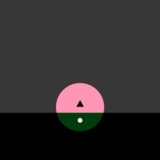The Good, The Bad, and The Mass Effect: Andromeda
By JasonR86 18 Comments
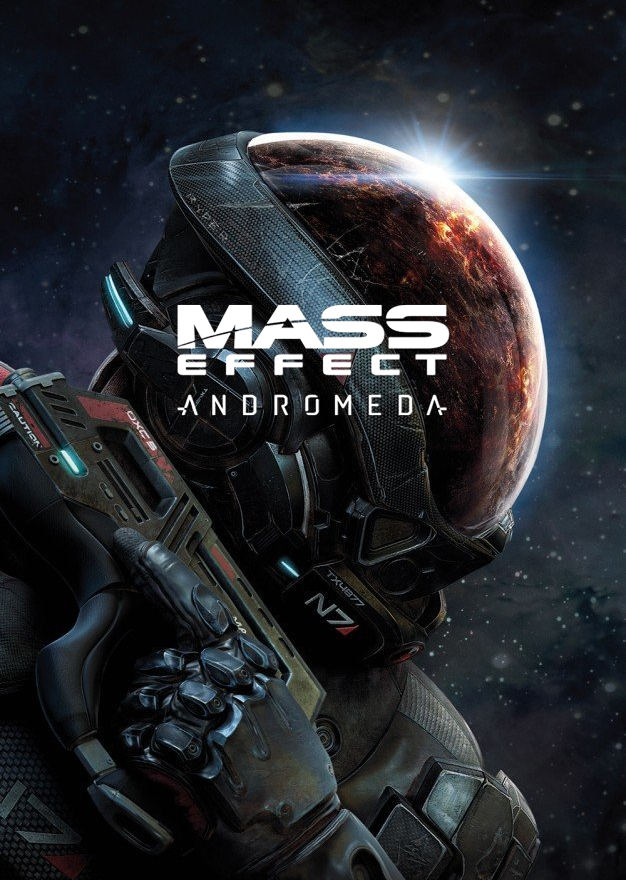
I bought Mass Effect: Andromeda back in March for a grand total of $7.49 for my PS4. I figured that was enough money for me to know what this game was all about, on my own terms. As I played it, I was struck by two primary reactions; boy this game is broken, and I think I like it. Throughout my playthrough I tried to understand why I liked this game because it is just so janky in so many ways. So, I thought it would be an interesting experience to write down the good and bad of my playthrough of ME:A and see what comes up.
History with the Series
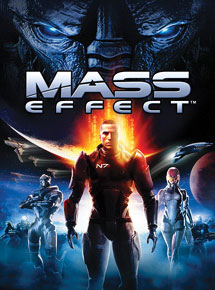
I bought the Xbox 360 because of Mass Effect 1. At the time, I only owned a Wii and hadn’t seen the game that would have pushed me over the edge to buy a second console. But ME did it. I’m a sucker for RPGs, I adore Star Trek, had enjoyed KOTR quite a lot, and saw a 360 with ME packed in. It all added up, so I bought the bundle and played the hell out of ME, ME 2, and ME 3. I think I played through all three at least three times. I may have put more hours into those three games than any other game. I was obsessed. It might not feel quite as impactful looking back but having a game series where your choices carried over, game to game, was hugely novel to me at the time. Though I know next to nothing about game development (he says before making a statement about game development), it felt like that was a game design that couldn’t have happened in the previous generation of consoles. That along with solid gameplay, mostly good characters, solid art design, and a great soundtrack made for a standout gaming experience for me.
Expectations
From what I had gathered from osmosis, ME:A was a disaster of a game that didn’t hold a candle to the original trilogy. I had heard about, and saw through coverage, a lot of the glitches. I had heard that the story was bad, and the characters were poorly written. I hadn’t heard a single person recommend the game even after it was fully patched up. My expectations were in the gutter.
Story (and Politics?)
Yes, politics. We’ll get there. But, the setup for this game is that the Citadel, from the original ME games, had commissioned a mission wherein three (or four?) ‘arks’ (big ass ships) would attempt to colonize a planet in the Andromeda Galaxy because...adventure.
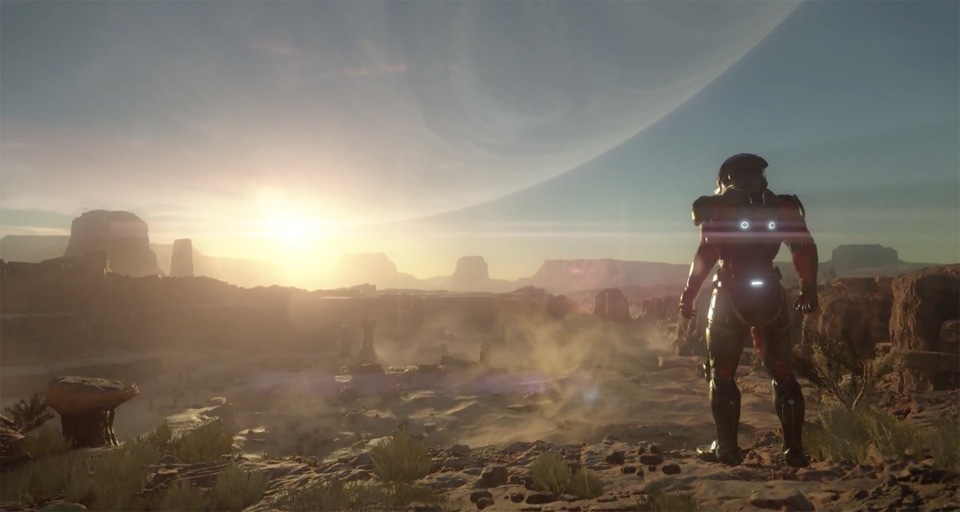
600 years later (cryosleep happens), the human Ark runs into space debris, which you find out has been named ‘the scourge’ and, if memory serves, is solidified dark matter (huh?), and the planet you had come to colonize is being ransacked by an alien species. Here come the politics! So, the game pays lip service to ‘first contact’ protocol, which is described in short as ‘don’t act aggressively unless aggressed upon’. What that means in terms of gameplay is the player character, Ryder, walking up to a group of the aliens, who appear to be accosting a fellow squad mate, with her/his hands up saying in English a bunch of ‘we come in peace’ talk. The aliens, who don’t speak English (until they do, suddenly, later in the game), yell back in their own language, and a firefight ensues. I tried to get them to fire on me, but I couldn’t. I had to initiate the contact, destroying the notion setup by the lip service. But the humans conclude that the aliens were bad and were the aggressors. And from that point on, they are the bad guys. Conveniently, they are legitimately bad, and intend to turn every species in the Andromeda Galaxy into a version of their own species, sort of like the Borg from Star Trek. But the humans on this first planet don’t know any of this. In fact, they don’t know anything at all and yet draw conclusions about all they come across. Case and point, in one of the optional areas of this first planet Ryder can find a building with a bunch of alien equipment in it. It’s made clear to the player, and the characters, that they don’t know what that equipment is, how anything in the building functions, or anything else of consequence. But, when Ryder catches up with her/his Father later on (the original Pathfinder, until he dies and Ryder takes over), she/he tells him that the building was there for research and because the aliens we’d met are using that building (which was pure conjecture because we didn’t see any of them in the building) to research the planet (also conjecture) they must not be locals to the planet (because local species wouldn’t research their own planet?). This sort of assuming and conjecture to create a reality is emblematic of a larger assumption that is the basis for this entire mission; the Milky Way Galaxy will find and colonize a planet. They will integrate themselves, welcomed or not, and base actions from their perspectives, whether those perspectives are representative of the reality of the Andromeda Galaxy. There’s a sense of entitlement and assumed expertise on the part of the Milky Way Galaxy species I found really gross early on.
Over time, you run across one other species in the Andromeda Galaxy, the Angarans, who have been fighting the main antagonists, the Kett (the ‘bad’ aliens from the first planet), for hundreds of years. You also run across, eventually, a bunch of Milky Way Galaxy species who, apparently, were sent to the Andromeda Galaxy a few years ahead of the Arks to set up a Citadel equivalent space station, the Nexus, but there was a coup attempt, a bunch of violence that isn’t ever really fully fleshed out, and now a bunch of Milky Way species are occupying planets all over the place (well, 5 in particular). So really most of the story is based around cleaning up the mess from the first planet engagement, the Nexus violence nonsense, interacting with the two new species, and trying to establish the Milky Way in this new galaxy.
To that end, the story is neat. It’s fun building up a presence on various planets, staking a name and a reputation for an entire galaxy’s species as their representative. It feels like you are navigating new territory and setting the standard for your species’ presence. The Angaran/Kett relationship is, well, so-so. They try to link the two together and give a deeper meaning to the existence of the Angaran, and extension the Kett, but it didn’t land with much emotional weight. There is, as in the Milky Way Galaxy, a long-gone species with amazing ancient technology that the current species are trying to understand and use. But though that set up is like the original ME trilogy’s ancient aliens, their impact on the galaxy is quite different. Without spoiling it, their role is quite fascinating and results in some cool moments. The main bad guy is the most main bad guy-like a main bad guy could be. He’s completely unremarkable. As are the Kett, really. They exist. They look like bad guys, the snarl and whatnot. You shot them. Eh.
Characters
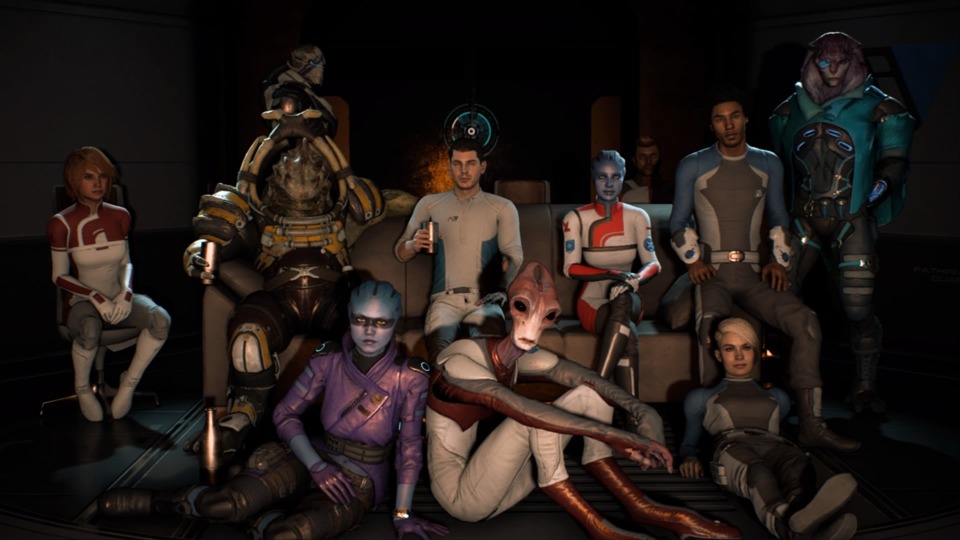
The Ryders – So the main playable character is either Scott or Sara Ryder (or you pick a new first name). I made a Sara Ryder. Who sort of looked Japanese, but I didn’t bother to change the appearance of Scott (who looks like an average white dude), making it weird when the game’s narrative mentions that they are twins. Ryder as a character has more personality, inherently, than Shepard did, but how you express that personality is up to you as the player in dialogue options. Inherently, Ryder is sort of a Han Solo archetype. She’s a bit bumbling, flying by the seat of her pants, and overly lucky allowing her to pull out of whatever situation she and her crew find themselves in. In some ways I like this idea. It gives the game a different tone than the first trilogy, which looking back seemed more self-serious. Plus, her devil may care attitude fits for a young person thrust into a situation they weren’t trained or prepared for. On the other hand, most of her Han Solo quips don’t land. A lot of the time I found myself cringing at the attempts at humor. For every genuinely charming moment there were a dozen or more ‘I want to bury my head in the sand’ moments. The way the dialogue options impact Ryder’s personality is essentially; do you want to be serious, playful, pragmatic, or sincere. Those archetypes tend to be as broad as her inherent personality. Ultimately, Ryder didn’t feel like my character. She felt like an established character I was nudging left or right.
Liam – Liam sucks. He has his moments. His loyalty mission, for example, was not only one of the better missions but had some of the best dialogue moments in the game, some of which were provided by Liam. But the dude still sucks. His archetype is basically ‘I’m a fuck up but I’m charming?’ He has the devil may care attitude of Ryder, mixed with periods of anarchism and juvenile vengefulness, but without any of the luck of Ryder. Or the charm. He just sucks. Liam sucks.
Cora – Cora has three modes; overly serious, trying to be a bad ass by saying bad ass tough character things, and overly sincere. Can’t say I was much of a fan of any of the three modes. She’s not awful, she’s just too broad of a character.
Drack – Picture in your head the archetype of an old, male Krogan and you have Drack. He’s fine. He’s wholly unremarkable. He’s exactly what you would expect him to be as an old Krogan. No more and no less.
Peebee – Peebee might be my favorite character in the game. She’s certainly the most interesting. At first glance, she seems a bit flighty and disconnected. But they get into why that is and over time she opens and connects with more characters in some of the most sincere and charming moments in the game. Even just off the cuff conversations she has with other characters while exploring the world can be nice and earnest in a way that doesn’t feel forced or awkward, like so much of the writing in this game can be.
Vetra – Vetra might be my other most favorite character, though her introduction sort of sucks. She comes across out the gate as trying too hard to get across what her character is which oddly is not representative of her actual character at all. She’s a sincere, honest, and insecure character who has some of the most honest conversations with Ryder, as well as with Peebee, in the game and it works very well. In fact, the conversations between Peebee and Vetra while on missions can be very sweet and charming. She, along with Peebee, is fleshed out and well rounded in a way that a lot of the other characters in this game are not.
Jaal – Jaal is a pretty good character. He’s well fleshed out and develops quite a lot over the course of the game. At times, he can rely too heavily on two sides of his personality, sincere or playful, but there’s more to him that can come out from time to time. He also has some of the most thoughtful dialogue in the game.
The Running Around and The Shooting
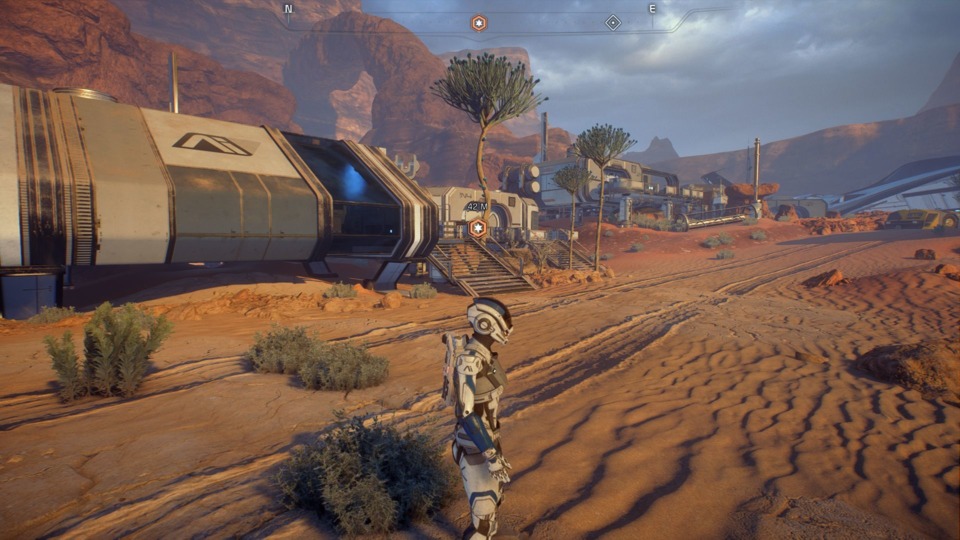
The running around can be good in this game. Like with the other Mass Effect games, the on-foot movement has two modes; exploration and aiming. When in exploration mode, the camera is oddly high above Ryder’s head and the FOV seems…weird. I can’t quite put my finger on it, but it seems like the view is a mix of a fisheye effect in a world that is scrunched, and the characters seem too small. The actual movement feels fine, though the design of the environments, at times, caused me to get hung up on various objects. And, oddly, in one specific area Ryder would run into an invisible something that I would have to run around before proceeding. But more on how busted this game is later.
The running around whilst aiming is solid enough. It feels akin to Mass Effect 2 and 3, but with more mobility including dashing and jumping. The shooting in and of itself feels solid as do the powers at your disposal. It feels like a natural evolution of Mass Effect 3, but in environments that are more open. The shooting is solid and is one of the areas that can be discussed with few qualifications.
Presentation
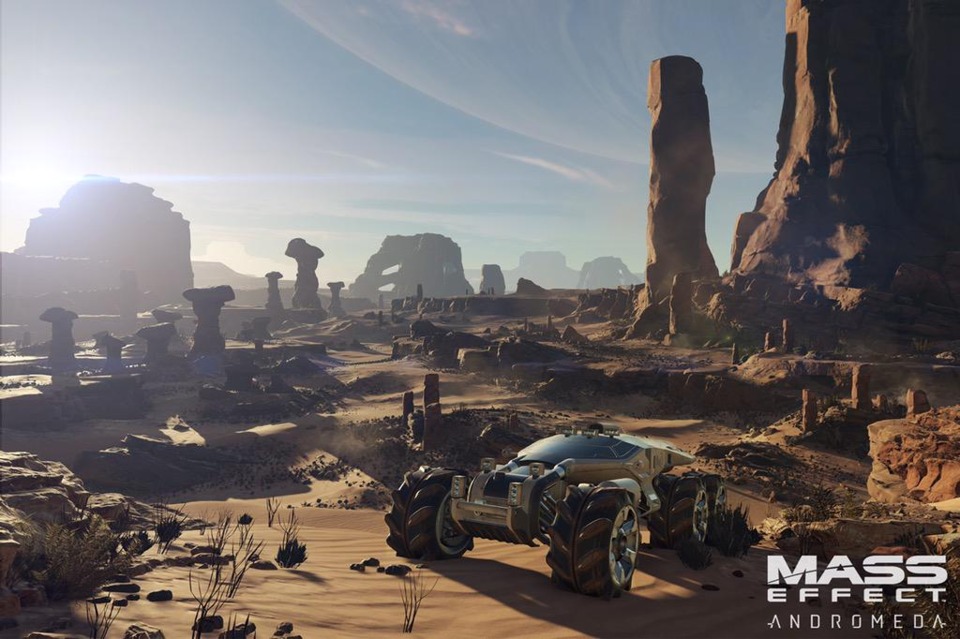
So, lets start with the good. A lot of this game looks pretty good. There are a few moments where the art design really shines and, even when the game is rendering a traditional setting, like a desert planet, it does a good job of representing those settings and giving them a sense of place. The characters can look good, well the main characters…and mostly when standing still. And the effects work can look nice. And the use of color is very nice. And the planets and flying around can look nice too.
Now for the bad. Originally, I played this game on the PS4 base model. Actually, a launch base model. So, I had the weakest of the Sony consoles trying to power through this game and my God was it a mess. Immediately there were glitches. Objects, characters, doors, walls, practically anything and everything popped in and out of existence regularly. For example, one of the most common glitches I saw happened whenever I moved my camera. If there was a wall near my character and a door in the distance, I could, what seems to me from the little I know about game design, remove the door from memory by simply maneuvering the wall in front of the door. Which I’m sure happens all the time in video games, but you rarely see it happen. In practice, what that meant was that I could pop doors, objects, whatever out of existence simply by moving a wall in front of it. Then the audio glitches. Sound would regularly cut out, voice over would lag before playing, and so on. The framerate was all over the place and the game would regularly pause of the action in place, particularly whilst exploring the planets in the Nomad (the Mako equivalent all-terrain vehicle), while loading the rest of an environment. Textures wouldn’t load. Character scripting for NPC’s was awful with characters in non-action settings perform action behaviors, getting stuck in the environment, running into walls. I could go on but suffice it to say it was easily the buggiest game I had ever played. This was after years of patches, mind you.
Then I got a PS4 Pro. The game was still one of the buggiest games I had played but maybe not the buggiest. The character scripting was still poor, textures still took time to load, I still had crash bugs, audio glitches were still present, and so on. But the game overall just felt more stable. The framerate was better, there was less pop-in and fewer instances of everything on screen disappearing from existence. It went from a complete disaster of a game that the developer and publisher should be embarrassed of into just a messy game that should be better. So, I guess buy a more expensive console or a PC if you want to play this game?
Do You Like This Game and Why?
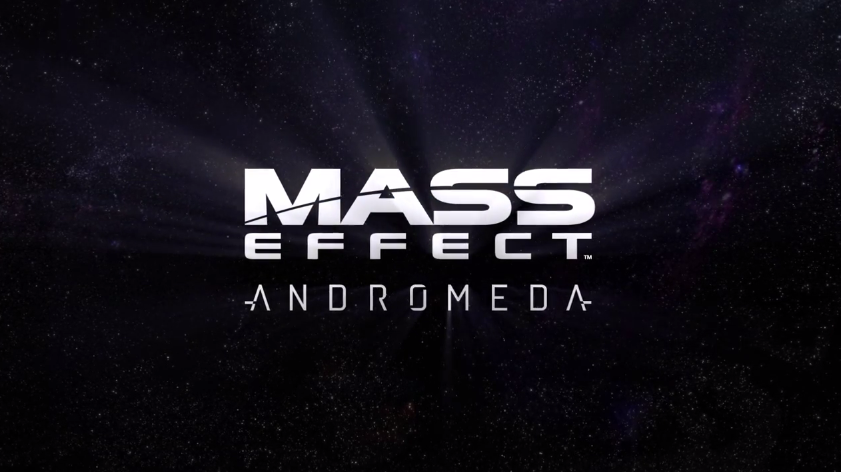
Yes, and I’m not totally sure. The easy answer is I like the Skinner box nature of the quest design. It’s thoughtless, fast, and offers easy reward. But there’s a bit more to it. I like what they were going for, and on occasion succeed at. I like the idea of a Mass Effect game that is lighter in tone. I like trying to navigate a new galaxy with new aliens and new political and social concerns. I like what the ancient alien technology was designed to do. In the middle section of the game, when you are establishing outposts on planets, the game is probably at its best. I’m happy I played this game and a part of me wishes Bioware would make a sequel to this game. But, also, nearly every single aspect of the game needs to be improved. In practice, I have no idea what that would look like. I’m clearly not a game developer. But there’s barely any part of this game that is good without qualification. It’s one of those rare games that I liked but wouldn’t recommend. That’s simply not good enough for a big series from an established developer and publisher. So, yes, I like it, but with as many asterisks as I can muster.
